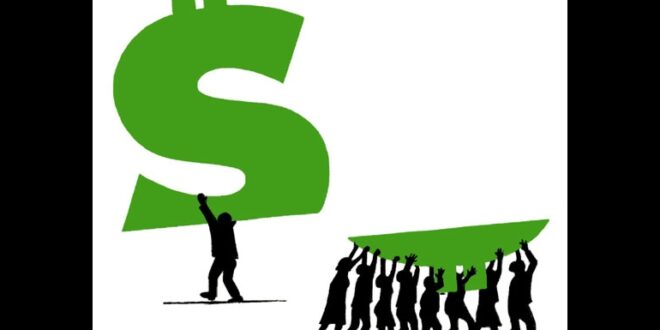The World Inequality Report 2022, released by the global research initiative World Inequality Lab, found that the COVID-19 pandemic has widened the financial gap between the rich and poor to a degree not seen since the rosy days of world imperialism at the turn of the 20th century.
The world’s billionaires enjoyed the steepest increase in their share of wealth last year since the World Inequality Lab began keeping records in 1995, according to the study released Tuesday. Billionaires saw their net worth grow by more than $3.6 trillion in 2020 alone, increasing their share of global wealth to 3.5 percent. Meanwhile, the pandemic has pushed approximately 100 million people into extreme poverty, boosting the global total to 711 million in 2021.
“Global inequalities seem to be about as great today as they were at the peak of western imperialism in the early 20th century,” the report said. “Indeed, the share of income presently captured by the poorest half of the world’s people is about half what it was in 1820, before the great divergence between western countries and their colonies.”
The report showed the wealthiest 10 percent of the world’s population takes 52 percent of global income, compared to the 8 percent share of the poorest half. On average, an individual in the top decile earns $122,100 (€87,200) per year, while a person from the poorest half of global earners makes $3,920 (€2,800) a year.
Global wealth inequality is even more pronounced than income inequality. The poorest half of the world’s population only possess 2 percent of the total wealth. In contrast, the wealthiest 10 percent own 76 percent of all wealth, with $771,300 (€550,900) on average.
The ultra-rich have siphoned a disproportionate share of global wealth growth over the last few decades. The top 1 percent took 38 percent of all additional wealth generated since 1995, whereas the bottom 50 percent have only captured 2 percent of it. The wealth of the richest individuals has grown between 6 to 9 percent per year since the mid-1990s, compared to the global 3.2 percent average.
Inequality levels vary across the regions. In Europe, the top decile takes about 36 percent of income share, while it holds 58 percent in the Middle East and North Africa. However, inequalities between countries have declined in the last two decades, whereas inequality within “rich” countries has risen sharply. In the United States, the top 1 percent owned 35 percent of the country’s wealth, approaching Gilded Age levels of inequality.
This massive accumulation of capital has come at the expense of public wealth over the last four decades. The share of wealth held by public actors is close to zero or negative in “rich” countries, indicating that the totality of wealth is privately owned, a trend exacerbated by the coronavirus pandemic.
The report also studied connections between wealth inequality and inequalities in contributions to climate change, showing the top 10 percent of emitters are responsible for close to 50 percent of all greenhouse gas emissions, while the bottom half produces 12 percent of the total. This disparity is also seen within nominally rich countries. The bottom half of the population in Europe, East Asia, and North America is responsible for an average of 3 to 9 metric tons of emissions per person a year. This contrasts sharply with the emissions of the top 10 percent in these regions: 29 metric tons in Europe, 39 in East Asia, and 73 in North America.
Given this diverse and severe inequity, the authors of the report propose a series of “modern progressive taxes” on wealth used to invest in education, health, and ecological restoration.
But such a path is a dead end; All the official and semi-official institutions of government are subordinated to the interests of the financial aristocracy and serve to constrain and block any measure that threatens their hoards of wealth.
This is demonstrated by the disastrous response to the COVID-19 pandemic, with governments around the world declaring the pandemic over and eliminating remaining protective measures. Rather than being driven by concern for public health, the actions of governments have been driven by the effort to protect the wealth and privileges of the upper echelons of society.
The glaring contradiction between the world’s richest people and the precarious circumstances billions are living in is fueling a growing wave of working class militancy. The working class must demand the massive amount of wealth and resources hoarded by the wealthiest layers be seized and directed to fight the global pandemic.
The chief obstacle to solving the world’s burning social questions—whether the devastating impact of COVID-19 or the widespread growth of inequality—is the private profit interests of the capitalist ruling class. To save lives and avert even further disaster, workers must build an international socialist movement based on the interests of the working class.
 Eurasia Press & News
Eurasia Press & News



